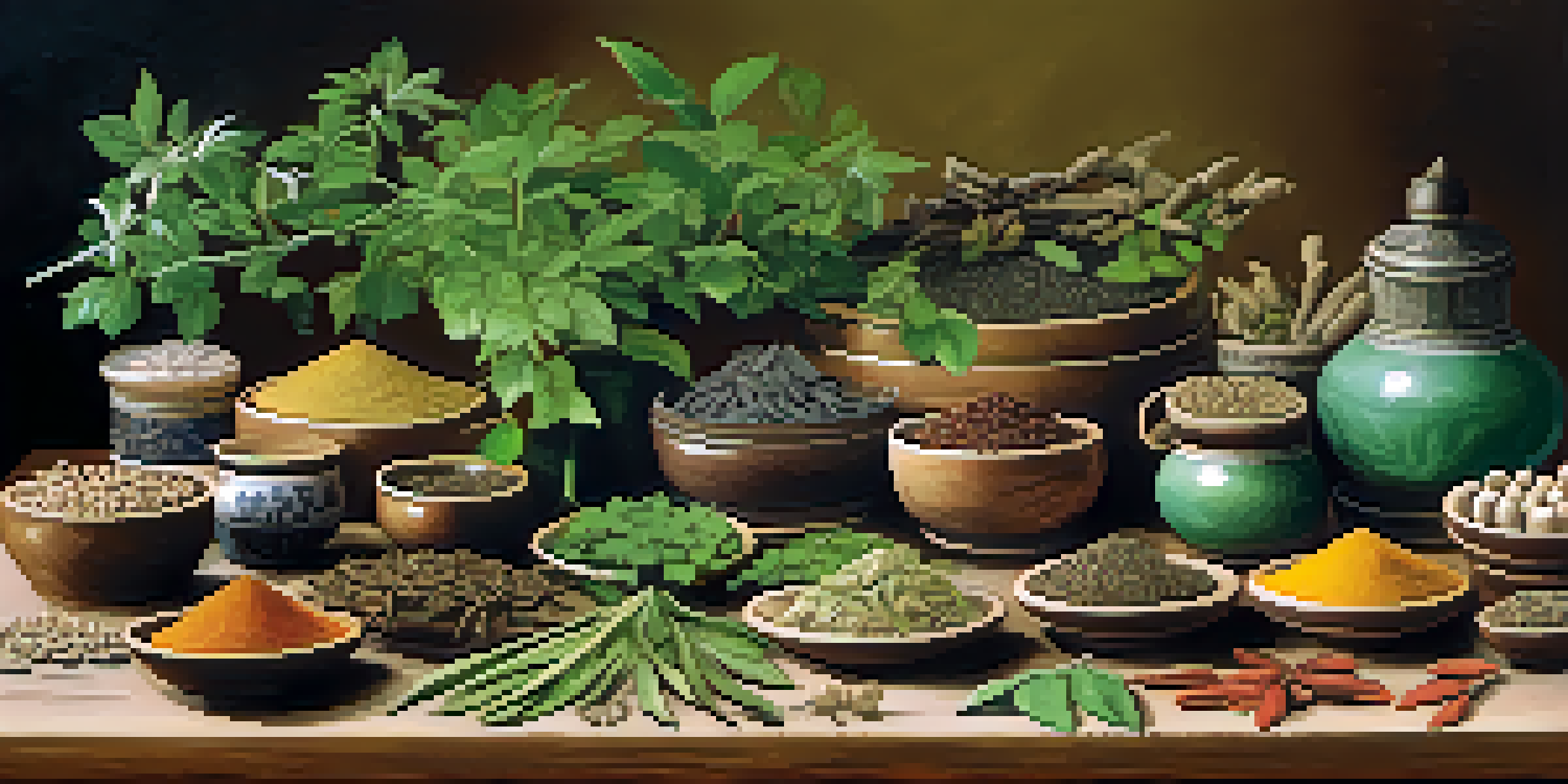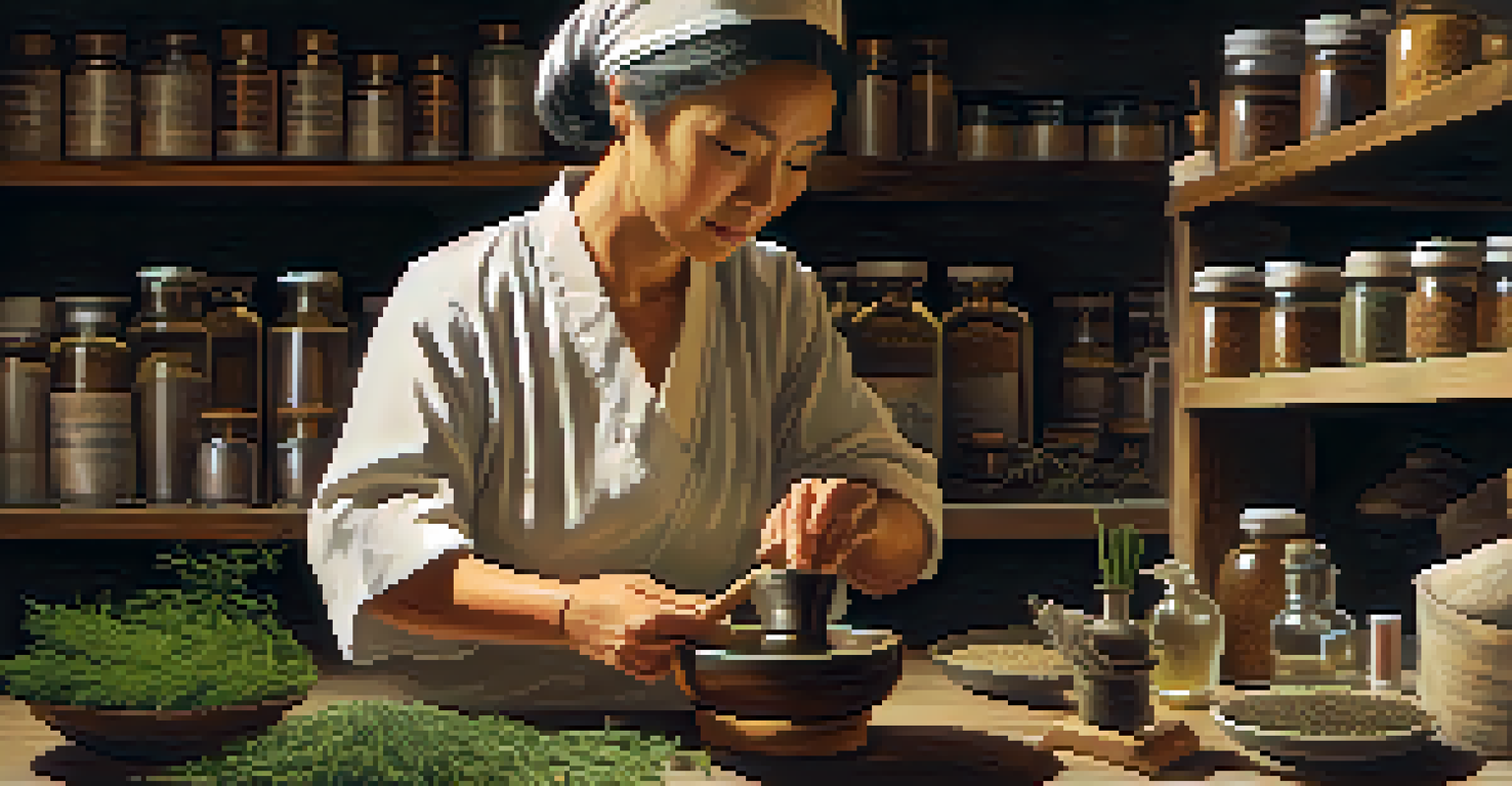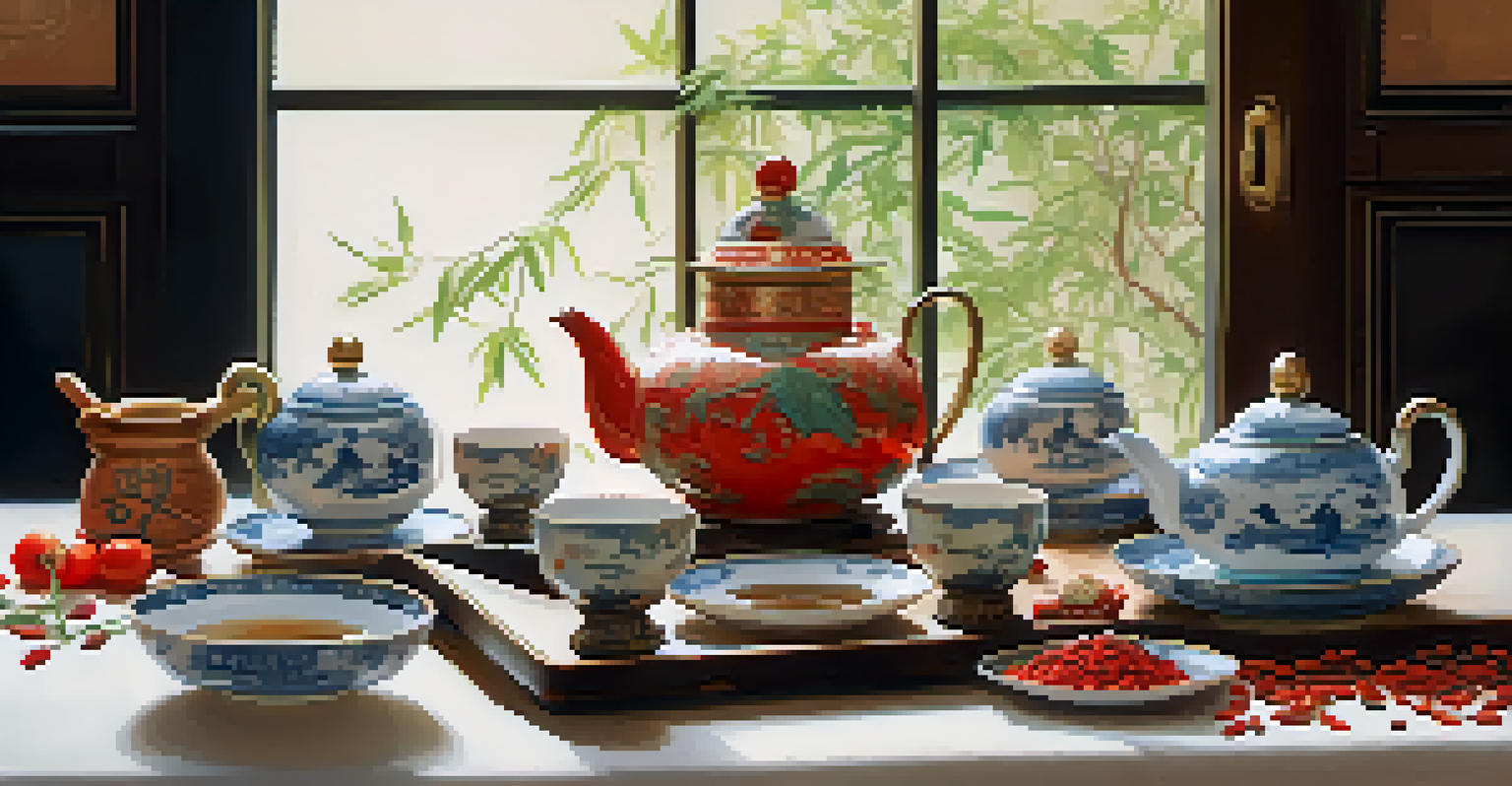The Role of Raw Ingredients in Traditional Chinese Medicine

Understanding Traditional Chinese Medicine and Its Foundations
Traditional Chinese Medicine (TCM) is an ancient healing practice that emphasizes balance and harmony within the body. It operates on the principles of Yin and Yang, as well as the flow of Qi, or vital energy. By restoring balance, TCM aims to treat not just the symptoms but the root causes of illness.
The greatest wealth is health.
At the heart of TCM lies the use of raw ingredients, which are derived from plants, minerals, and animal products. These ingredients are believed to possess unique properties that can influence health positively. Understanding these elements is crucial for grasping how TCM works.
TCM practitioners often rely on a holistic approach, considering emotional, physical, and environmental factors. This comprehensive view underscores the importance of each raw ingredient as it contributes to overall wellness, showing how interconnected our health truly is.
The Significance of Raw Ingredients in TCM Formulations
Raw ingredients serve as the backbone of TCM formulations, whether in herbal remedies, teas, or tonics. Each ingredient is carefully selected based on its specific properties and how it interacts with others. The combination of these ingredients creates a synergistic effect, enhancing their healing capabilities.

For example, ginseng, known for its energy-boosting properties, is often paired with goji berries, which support overall health and vitality. This thoughtful pairing reflects the TCM philosophy of using nature's gifts to restore balance. The art of combining raw ingredients is as much about tradition as it is about science.
TCM Focuses on Balance and Harmony
Traditional Chinese Medicine emphasizes achieving balance within the body through the principles of Yin and Yang and the flow of Qi.
By understanding how these ingredients work together, practitioners can tailor treatments to individual needs. This personalization is a vital aspect of TCM, allowing for a more effective approach to healing.
Common Raw Ingredients and Their Healing Properties
There are numerous raw ingredients used in TCM, each with its own set of healing properties. Some of the most commonly used are ginseng, licorice root, and astragalus. Ginseng, for instance, is renowned for boosting energy and immune function, while licorice root is often used to harmonize other herbs in a formula.
Nature itself is the best physician.
Astragalus, another popular ingredient, is believed to strengthen the immune system and enhance overall vitality. Its use highlights the focus on prevention in TCM, where maintaining health is just as important as treating illness.
These ingredients are more than just herbs; they are part of a time-honored tradition that connects us to nature and its inherent healing powers. By incorporating them into daily life, individuals can tap into their benefits and promote long-term wellness.
The Role of Preparation Methods in TCM Practices
The way raw ingredients are prepared can significantly affect their potency and efficacy. TCM practitioners employ various methods, such as decoction, infusion, and powdering, to maximize the benefits of these ingredients. Each method serves a different purpose and is chosen based on the desired outcome.
For instance, decoction involves boiling herbs in water to extract their medicinal properties, making it particularly effective for tougher roots and barks. On the other hand, infusion is more suited for delicate flowers and leaves, preserving their volatile oils and flavors.
Raw Ingredients Enhance Healing
The careful selection and combination of raw ingredients in TCM create a synergistic effect that boosts their healing properties.
These preparation techniques are not merely practical; they represent a deep understanding of the ingredients' characteristics and how best to utilize them. This attention to detail ensures that each treatment is as effective as possible.
The Integration of Raw Ingredients in Modern Medicine
As interest in holistic health grows, many aspects of TCM, including the use of raw ingredients, are being integrated into modern medicine. Research has begun to validate the therapeutic properties of several herbs, leading to increased acceptance among healthcare professionals. This bridge between ancient practices and contemporary science is exciting for both patients and practitioners.
For instance, studies have shown that certain TCM herbs can complement conventional treatments, particularly in areas like pain management and immune support. This fusion of approaches can result in more comprehensive care for patients.
Moreover, the rise of herbal supplements and natural remedies in mainstream health stores reflects a shift toward valuing traditional wisdom. This trend encourages individuals to explore the benefits of raw ingredients, fostering a greater appreciation for TCM.
Challenges in Sourcing Quality Raw Ingredients
Despite the benefits of raw ingredients in TCM, sourcing quality products can be challenging. Issues such as overharvesting, pollution, and lack of regulation can affect the purity and efficacy of these raw materials. It's essential for consumers and practitioners to be aware of these challenges when selecting ingredients.
Sustainable sourcing is crucial for ensuring that the benefits of TCM can be enjoyed for generations to come. Many organizations are working to promote responsible harvesting practices and educate consumers about the importance of quality ingredients.
Sustainability is Key for Quality
Sourcing quality raw ingredients sustainably is essential for preserving the integrity of Traditional Chinese Medicine and its benefits.
By prioritizing sustainability and quality, we can help protect the natural resources that are vital to TCM. This not only benefits our health but also preserves the integrity of traditional practices.
The Future of Raw Ingredients in Traditional Chinese Medicine
Looking ahead, the role of raw ingredients in TCM is likely to evolve alongside advancements in science and technology. Innovations in cultivation and extraction methods may enhance the efficacy of these ingredients, making them even more accessible and effective. Additionally, ongoing research will continue to shed light on the benefits and applications of these ancient remedies.
There is also a growing interest in education around TCM, which may lead to a resurgence in traditional practices. As more people seek holistic approaches to health, the demand for quality raw ingredients will likely increase.

Ultimately, the future of TCM hinges on the ability to blend traditional wisdom with modern insights. By valuing and preserving these raw ingredients, we can ensure that their healing potential remains a vital part of health and wellness.